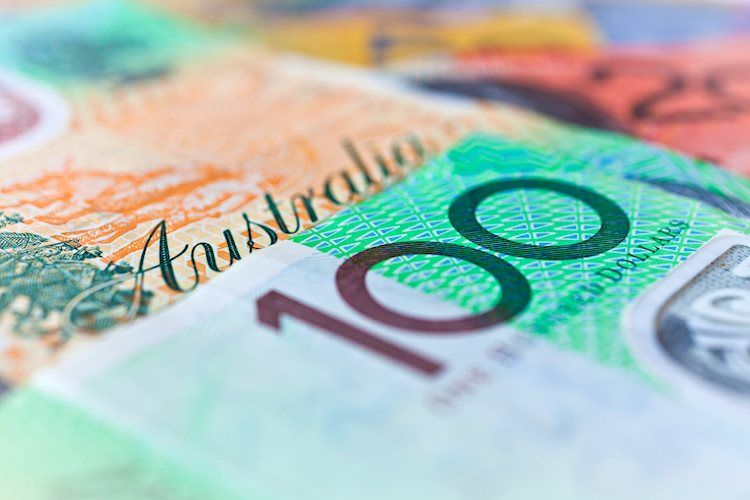- AUD/USD falls after US inflation data eases, suggesting a slower pace of consumer spending.
- PPI growth slows in the US with headline PPI rising by 1.7% annually and core PPI by 2.4%, below expectations.
- RBA rate hike concerns weigh on AUD, experts discuss a possible policy-easing pivot.
The AUD/USD rose on Thursday after the release of US inflation data, which eased concerns about a faster pace of consumer spending. Producer Price Index (PPI) growth slowed in the US, which weighed on the USD.
Despite the uncertain economic outlook in Australia, the Reserve Bank of Australia (RBA) remains cautious due to persistent inflation. As a result, financial markets anticipate a modest interest rate cut of only 0.25% in 2024. This conservative stance reflects both the ongoing inflationary pressure and the central bank’s commitment to maintaining financial stability.
Daily digest market movers: Australian Dollar edges higher on US inflation data, RBA concerns
- PPI report shows slower annual headline PPI growth of 1.7% (vs. estimates of 1.8%).
- Core producer inflation rises by 2.4%, below expectations of 2.5%.
- Slower producer inflation suggests sluggish consumer spending, prompting Fed interest rate cut bets.
- On the other hand, the AUD struggles due to concerns over Australian economic growth.
- In addition, high RBA interest rates raise worries over recessionary risks.
- Former RBA Governor Bernie Fraser calls for an Official Cash Rate (OCR) reduction to avoid severe employment consequences. He also criticized the bank for prioritizing inflation over labor market concerns.
AUD/USD technical outlook: Mixed momentum with signs of bullish recovery
The AUD/USD pair is currently trading within a well-defined range, indicating mixed market sentiment. The Relative Strength Index (RSI) has recently entered positive territory and is rising sharply, suggesting that buying pressure is increasing.
However, the Moving Average Convergence Divergence (MACD) is showing a decreasing red histogram, indicating that selling pressure is still present. The overall outlook is mixed with both bullish and bearish signals present.
Central banks FAQs
Central Banks have a key mandate which is making sure that there is price stability in a country or region. Economies are constantly facing inflation or deflation when prices for certain goods and services are fluctuating. Constant rising prices for the same goods means inflation, constant lowered prices for the same goods means deflation. It is the task of the central bank to keep the demand in line by tweaking its policy rate. For the biggest central banks like the US Federal Reserve (Fed), the European Central Bank (ECB) or the Bank of England (BoE), the mandate is to keep inflation close to 2%.
A central bank has one important tool at its disposal to get inflation higher or lower, and that is by tweaking its benchmark policy rate, commonly known as interest rate. On pre-communicated moments, the central bank will issue a statement with its policy rate and provide additional reasoning on why it is either remaining or changing (cutting or hiking) it. Local banks will adjust their savings and lending rates accordingly, which in turn will make it either harder or easier for people to earn on their savings or for companies to take out loans and make investments in their businesses. When the central bank hikes interest rates substantially, this is called monetary tightening. When it is cutting its benchmark rate, it is called monetary easing.
A central bank is often politically independent. Members of the central bank policy board are passing through a series of panels and hearings before being appointed to a policy board seat. Each member in that board often has a certain conviction on how the central bank should control inflation and the subsequent monetary policy. Members that want a very loose monetary policy, with low rates and cheap lending, to boost the economy substantially while being content to see inflation slightly above 2%, are called ‘doves’. Members that rather want to see higher rates to reward savings and want to keep a lit on inflation at all time are called ‘hawks’ and will not rest until inflation is at or just below 2%.
Normally, there is a chairman or president who leads each meeting, needs to create a consensus between the hawks or doves and has his or her final say when it would come down to a vote split to avoid a 50-50 tie on whether the current policy should be adjusted. The chairman will deliver speeches which often can be followed live, where the current monetary stance and outlook is being communicated. A central bank will try to push forward its monetary policy without triggering violent swings in rates, equities, or its currency. All members of the central bank will channel their stance toward the markets in advance of a policy meeting event. A few days before a policy meeting takes place until the new policy has been communicated, members are forbidden to talk publicly. This is called the blackout period.
Read the full article here

